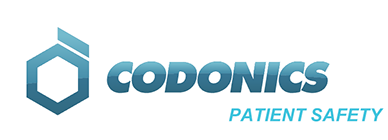When pharmacy technicians leverage pre-tagged RFID-enabled medications, they can better streamline daily pharmacy workflows to save time and protect patients.
Between January 1 and March 31, 2024, Jennifer Santillan, Specialist Pharmacy Technician at the Operating Room Pharmacy at University of Illinois (UI) Health, and colleagues, tagged nearly 30,000 pharmacy items into the pharmacy’s radio frequency identification (RFID) medication management system to help manage its nursing and anesthesia needs.
“That works out to be about an average of 9,785 items per month,” she said.
Despite the time spent to manually tag medications, UI Health finds extreme value in their RFID kit and tray system. “Before we had this system, it took us a lot more time to put things together,” Santillan said. “For example, we have a service box for cardiology and transplant that had, at one point, 96 items. For us to manually check 96 items for correct quantities, valid expiration dates and quality products — meaning, unopened packaging and no flipped caps — was a feat. You’d need a technician to process it and a pharmacist to check it. To do it correctly took more than an hour for a single tray. We’d have to turn over 35 trays and there just weren’t enough personnel hours to do it.”
Now, Santillan’s team can efficiently and accurately process and check a tray in about 5 minutes. Most importantly, the RFID system helps to enhance safety for patients treated in the health system’s operating theaters.
Increased efficiencies with pre-tagged RFID-enabled medications
Kara Quartaro, a pharmacy technician responsible for the pharmacy’s RFID medication management at North Mississippi Health Services, also appreciates how such systems have helped to enhance her day-to-day workflows. Like many other pharmacy technicians, she sees significant improvements in inventory tracking, identifying expired medications and tracking down medications that have been recalled.1
“The system is incredibly helpful in allowing us to do a better job in letting us see what we have, where it’s at and when it expires,” she said. “It also allows us to keep track of count and lets us know what we need to order.”
Still, even with the time savings that the system provides, Quartaro also spends significant time tagging items. The majority of medications that come through her workstation for processing must be manually tagged, which involves her placing a small RFID tag onto the medication package, scanning the barcode, double checking that product information is loaded into the system correctly and then entering and confirming the lot number and expiration date.
“I probably spend at least an hour a day tagging, maybe a little more — it’s the most time-consuming part of getting everything into the system,” she said. “And you can still get errors. Sometimes you have to scan things twice, or if something is in too close proximity to the system, it will pick up other tags nearby, so you have to redo things if you aren’t careful.”
But when the pharmacy has access to pre-tagged RFID enabled medications from pharmaceutical manufacturers, the process is streamlined, saving time and reducing the potential for errors.
“Whenever we get the pre-tagged items in, I’m very excited because I can utilize items very quickly and know that they will go into the system without a problem,” said Quartaro.
Santillan agreed. “Having pre-tagged medications takes a lot of the labor time away both in terms of tagging and verification. It also reduces errors that may occur when, say, you are manually entering a National Drug Code (NDC) and the system jumps to a different drug even after you’ve populated the field. This happens with certain drugs, and it means you have to go back, take the tags off, re-tag and go through the process all over again.”
New opportunities for pharmacy technicians
Some pharmacy employees have expressed concerns that the use of RFID medication management systems will replace the need for traditional pharmacy technician roles, but Santillan disagrees.
“This has added another level of potential specialty technician roles and higher-level technology roles for us, which is very exciting,” she said. “And it’s also freed up pharmacists so they can use their time in better ways…. they can focus on other processes to help the health system function more safely and efficiently.”
Quartaro pointed out that once other technicians experience the convenience, efficiency and accuracy of RFID medication management solutions, they will not want to go back to more manual approaches.
“With these systems, and pre-tagged medications, we can support a much more reliable and efficient management system,” she said. “That’s something that benefits the pharmacy, the health system and our patients.”
Reference
- ASHP Foundation. 2022. Advancing medication safety through technology innovations: Focus on radio frequency identification technology. https://www.ashpfoundation.org/-/media/REF/Research/PDFs/ASHP_RFID_Report.pdf
